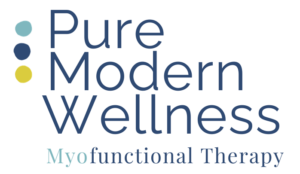
The Epidemic of Small Jaws
When we think about our teeth we don’t tend to think about the proportions of the jaw size, how our tongue fits in the mouth, and the overall relationship to the airway. We also don’t tend to question the old age of why our ancestors had all 32 teeth with straight, wide dental arches while in modern society we have high arched dental palates with normalized tooth extractions and orthodontic treatment to make the teeth straight. To understand the toll of the shrinking jaw and the impact it has on the airway we will need to go back in time.
Anthropologists have long noted the significant difference between the jaws and teeth in modern skulls compared to pre-agricultural, hunter-gatherer humans. Even compared to humans who lived during pre-industrial times. Daniel Lieberman, a Harvard biologist and expert on the evolution of the human head states in an interview for the book Jaws: The story of a hidden epidemic that he had personally never seen a pre-industrial skull with malocclusion. Weston A. Price, a Canadian dentist known for his theories on the relationship between nutrition and dental health, traveled around the world studying the teeth of civilized groups eating modern foods vs isolated groups eating a native diet with similar genes. His results were published in his book called Nutrition and Physical Degeneration with pictures showing the groups eating the industrialized modern foods to have unhealthy and crooked teeth, while the native diet groups had healthy straight teeth.
Something worth pointing out here is that when we started to cook our food it became more malleable resulting in less manipulation of the food with the tongue and chewing with our teeth which stimulates osteocytes for jaw growth. We also moved indoors to sleep where more allergens are present resulting in blocked nasal passages. George Catlin, an artist who traveled painting faces found himself fascinated with the health of Native Americans later writing a book called Shut Your Mouth and Save Your Life in 1875 documenting the Indians’ health as the result of nasal breathing during the day and night.
Russian doctor, Dr. Konstantin Pavlovich Buteyko spent the beginning of his medical career in 1946 studying the breath patterns of terminally ill patients before death. He noted in his findings the breathing of each of his patients increased as their conditions deteriorated and as they approached death. Dr. Buteyko later hypothesized exhaling carbon dioxide by deep and rapid breathing resulted in less oxygen uptake to vital organs. He continued his theories with his own by reconditioning his patients breathing patterns to normal levels by slowing the breath down, switching from mouth to nasal breathing, and relaxing the diaphragm thus, commencing the road to full recovery.
Dr. Christian Guilleminault, a physician and researcher in the field of sleep medicine coined obstructive sleep apnea syndrome and collaborated in the establishment of what is known as the Apnea-hypopnea index (AHI) to characterize the presence and severity of sleep apnea. He further established a causative relationship between sleep apnea and cardiovascular abnormalities. Following this work, in 1982 he began describing the presence of Upper Airway Resistance Syndrome seen in children and adults characterized by the narrowing of the airway causing sleep disruption, but not inherently overlapping with obstructive sleep apnea. He notes predisposing factors found in the American Journal of Respiratory and Critical Care Medicine include a high and narrow hard palate, an abnormally small intermolar distance, an overjet greater than or equal to 3 millimeters, and a thin soft palatal mucosa with a short uvula. He found that in 88% of the subjects, there is a history of early extraction or absence of wisdom teeth.
As we look back in history we can realize the human jaw is shrinking resulting in chronic mouth breathing that has many health consequences. Interestingly, genes alone do not cause a small jaw, but rather epigenetic factors. With early intervention, proper resting oral tongue position can help guide the maxilla forward making room for all the teeth and healthy hinged mandible not intruding the airway space. Young children seek the most benefit when it comes to using proper oral rest posture guiding craniofacial development as they grow. Adult treatment may be more complex, but there are a variety of individualized treatment options available to help restore nasal breathing and proper oral rest position.
To further read about the growing evidence from studies conducted around the world surrounding the jaw epidemic and the health consequences – I would like to invite you to check out a great journal article written in BioScience, “The Jaw Epidemic: Recognition, Origins, Cures, and Prevention”. Additionally, below is a video with three in-depth interviews to better understand jaw and facial development created by Nathan’s Notes – who’s mission is to produce clear, concise and well-researched explanations and I think he did a great job at that!
References:
Guilleminault, Christian; May 2000. “Upper Airway Resistance Syndrome Is a Distinct Syndrome”. American Journal of Respiratory and Critical Care Medicine.
https://www.atsjournals.org/doi/10.1164/ajrccm.161.5.16158a
